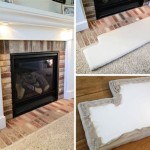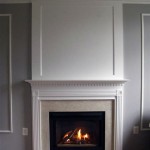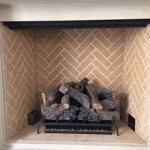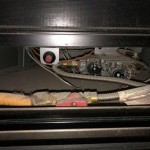Fireplace Canopy Hood: Design, Functionality, and Installation
A fireplace canopy hood, also known as a range hood or vent hood specifically designed for fireplaces, serves as a crucial component in managing smoke, heat, and byproducts generated by burning fuel. It is strategically positioned above the fireplace opening to effectively capture and direct these emissions up and out through the chimney or venting system. Understanding the design, functionality, and installation of a fireplace canopy hood is essential for ensuring a safe and efficient fireplace experience.
The primary purpose of a fireplace canopy hood is to improve indoor air quality by preventing smoke and particulate matter from entering the living space. Without a proper hood, smoke can backdraft into the room, causing discomfort, respiratory irritation, and potential health hazards. The canopy also helps to control heat distribution, preventing excessive heat buildup in the immediate vicinity of the fireplace.
Fireplace canopy hoods are available in a diverse range of materials, styles, and sizes to accommodate various fireplace designs and architectural aesthetics. Factors such as the fireplace opening size, chimney dimensions, and desired aesthetic influence the selection of the appropriate canopy hood. Careful consideration of these aspects ensures optimal performance and integration within the overall fireplace design.
Design Considerations for Fireplace Canopy Hoods
The design of a fireplace canopy hood involves several critical considerations to ensure its effectiveness and longevity. Material selection is a primary factor. Common materials include copper, stainless steel, and painted steel. Copper offers excellent heat resistance and a classic aesthetic, but it can be more expensive. Stainless steel is durable, corrosion-resistant, and provides a modern look. Painted steel is a more cost-effective option but may require more maintenance to prevent rust and corrosion.
The size and shape of the canopy hood are also crucial. The canopy should be wide and deep enough to effectively capture smoke rising from the fireplace opening. A general rule of thumb is that the canopy should extend at least six inches beyond the fireplace opening on all sides. The shape of the canopy can vary, with popular options including straight-sided, curved, and angled designs. The choice often depends on the aesthetic preferences of the homeowner and the architectural style of the room.
Another important aspect of the design is the inclusion of a baffle or filter system. Baffles are internal plates that help to redirect airflow and capture grease and particulate matter before they enter the chimney. This helps to prevent buildup within the chimney, reducing the risk of chimney fires and improving the overall efficiency of the venting system. Filters, typically made of mesh or charcoal, provide an additional layer of filtration to remove finer particles and odors.
Ventilation is paramount. The canopy hood must be properly connected to the chimney or venting system to ensure that smoke and fumes are effectively expelled from the building. The dimensions of the vent pipe and the overall design of the venting system should be carefully calculated to ensure adequate airflow. Local building codes often specify minimum venting requirements for fireplaces, and these requirements must be strictly adhered to.
Aesthetics play a role in the design process. Fireplace canopy hoods can be customized to match the style of the fireplace and the surrounding décor. Options include decorative trim, custom finishes, and integrated lighting. Lighting can enhance the ambiance of the fireplace and provide additional illumination for tasks such as tending the fire.
Functionality and Performance of Fireplace Canopy Hoods
The functionality of a fireplace canopy hood depends on its ability to effectively capture and remove smoke, heat, and other byproducts of combustion. The design of the canopy, the size of the vent pipe, and the overall efficiency of the venting system all contribute to its performance.
The primary function is smoke capture. The canopy must be positioned and sized correctly to effectively capture smoke rising from the fireplace. Insufficient canopy size or improper placement can lead to smoke spillage into the room. The shape and angle of the canopy also influence its ability to capture smoke, with flared designs often providing better performance. The draft of the chimney affects the efficiency of smoke removal. A strong draft pulls smoke upwards and out of the chimney, while a weak draft can cause smoke to backdraft into the room. Factors that can affect the chimney draft include the height and diameter of the chimney, the presence of obstructions, and weather conditions.
Heat management is another important function. The canopy helps to control the distribution of heat from the fireplace, preventing excessive heat buildup in the immediate vicinity. This improves comfort and reduces the risk of burns. The material of the canopy also affects its thermal properties. Copper, for example, conducts heat more efficiently than steel. The presence of insulation within the canopy can help to further control heat transfer.
Air quality improvement is a key benefit. By effectively capturing and removing smoke and particulate matter, the canopy hood improves indoor air quality. This reduces the risk of respiratory irritation, allergies, and other health problems. The presence of baffles and filters further enhances air quality by capturing grease, soot, and other pollutants. Regular cleaning and maintenance of the baffles and filters are important to ensure their continued effectiveness.
Energy efficiency can be indirectly impacted. A well-designed and properly functioning canopy hood can improve the overall efficiency of the fireplace. By preventing smoke from entering the room, the canopy reduces the need for additional ventilation, which can save energy. However, if the venting system is not properly designed, it can create a negative air pressure in the room, which can increase energy consumption.
Installation Procedures and Important Considerations
The installation of a fireplace canopy hood requires careful planning and execution to ensure its proper functioning and safety. It is generally recommended that installation be performed by a qualified professional.
Site preparation is the first step. This involves ensuring that the fireplace opening and chimney are properly prepared for the installation. Any existing damage or defects should be repaired before proceeding. The area around the fireplace should be clear of obstructions, and adequate access to the chimney should be provided.
Mounting the canopy hood is a crucial step. The canopy should be securely mounted to the wall or ceiling above the fireplace opening. The mounting hardware should be appropriate for the weight of the canopy and the type of wall or ceiling material. The canopy should be positioned at the correct height and distance from the fireplace opening to ensure optimal smoke capture. Leveling the canopy is also important for aesthetic reasons.
Connecting the canopy hood to the chimney or venting system is essential. The vent pipe should be properly sized and installed to ensure adequate airflow. The vent pipe should be securely connected to the canopy and the chimney, and all joints should be sealed to prevent leaks. The venting system should be inspected to ensure that it is free of obstructions and that it meets local building codes.
Testing the canopy hood after installation is crucial. This involves lighting a small fire in the fireplace and observing the performance of the canopy. Smoke should be effectively captured and removed through the chimney. Any signs of smoke spillage or backdrafting should be addressed immediately. The draft of the chimney should be checked to ensure that it is adequate. The venting system should be inspected for leaks or other problems.
Regular maintenance is necessary to ensure the continued performance and safety of the canopy hood. This includes cleaning the baffles and filters, inspecting the vent pipe for damage or obstructions, and checking the connections for leaks. The frequency of maintenance will depend on the frequency of fireplace use and the type of fuel burned. Professional chimney sweeps can provide thorough inspections and cleaning services.
Safety is paramount. A malfunctioning or improperly installed canopy hood can pose a significant safety hazard. Carbon monoxide poisoning, chimney fires, and smoke inhalation are all potential risks. It is essential to follow all safety guidelines and local building codes during installation and maintenance. Carbon monoxide detectors should be installed in the home to provide early warning of potential problems.

Canopies And Fire Hoods Camelot Fireplace Open

Fireplace Canopy Hoods Prefabricated Archways Ceilings

Fireplace Canopy Hoods Prefabricated Archways Ceilings

Canopies And Fire Hoods Camelot Fireplace Open

Fireplace Canopy Hoods Prefabricated Archways Ceilings

Camelot Real Fires Canopies And Fireplace Hood

How Fireplace Hoods Protect Your Hearth From Heat Damage

Audnam Metalworks Manufacturers Of Canopies For Inglenook Fireplaces

Canopies And Fire Hoods Camelot Fireplace Open

M1292 A Reclaimed Iron And Brass Inglenook Fireplace Canopy Hood
Related Posts








